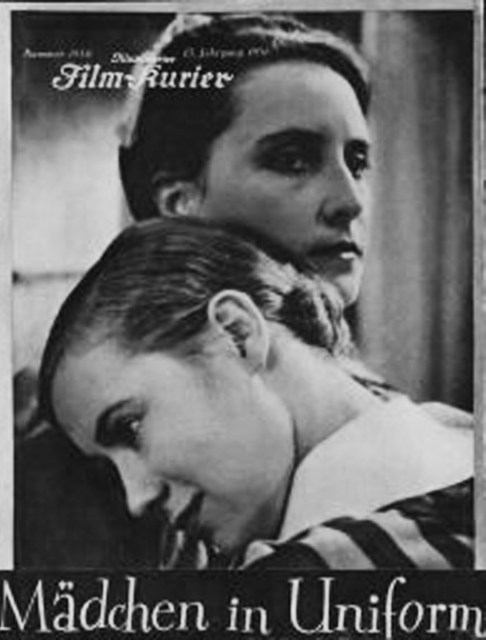If you’ve watched any classic film in which queer characters appear, it would likely have been the wicked Mrs. Danvers’s obsession with the late Mrs. DeWinter in Alfred Hitchcock’s Rebecca, the inaccurate biopic on Christina of Sweden starring the queer Greta Garbo; Queen Christina; or 1930’s Morocco, in which a tuxedo-clad Marlene Dietrich swoops in and hands a rose to a beautiful woman, inciting a jealous fit. Those characters are all still either heavily closeted or in different-sex relationships, though, which can lead them to being somewhat unsatisfactory for queer audiences. The biggest problem with Morocco is that the reason we all watch it happens in the first 15 minutes of the movie. You know not a single LGBT person in the whole universe gave half a damn about the movie-long romance with Gary Cooper after that famous drag scene, and the rest of the movie seems a little redundant. Also, while Queen Christina is worth watching, the queer “moment” of the film is a millisecond long kiss between her and her “handmaiden.” Not a lot going on, there. Or, in another extreme, we have 1961’s The Children’s Hour starring Audrey Hepburn and Shirley MacLaine, which, while classic and a must-watch in queer cinema, is definitely a little too overwrought and self-shaming to actively enjoy, and which is intrinsically more about the hazards of small town gossip than it is about two women living gay and proud.
Classic Hollywood 101 requires the background knowledge that film studios were policed by an apparently insane censorship board known as the Hayes Office. Quite a far cry from today’s Hollywood, when film studios are policed by an apparently insane censorship board called something else. Gay people were pretty much the definition of what unsettled Nuclear Family style America. Homosexuality was actually considered a treatable mental illness until 1974, as well as being exceptionally criminalized during the McCarthy era via a series of forever unsettling anti-gay propaganda. So, as you might imagine, there are not a whole lot of queer moments in cinema history.
THERE ARE A FEW, THOUGH. So, let’s talk about some of my lesser known favorites.
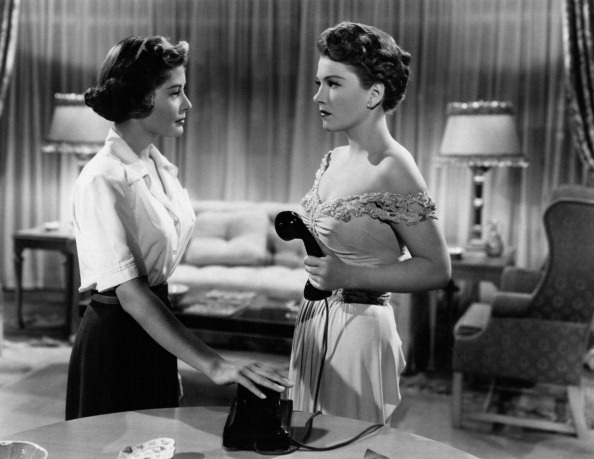
Eve Harrington, All About Eve – 1950
The Story: The main character of the film is actually not Eve at all, but rather Margot Channing, a popular actress turning 40 and fearing the end of her career, played flawlessly by Bette Davis. At the start, we are introduced to the characters, who are all at an awards cerimony, grumbling at the praise being heaped upon the villain of our story, Eve Harrington. I mean, Eeeeeeve HARRington, who, in the flashback that is the majority of the movie, shows a bizarre interest in Margot, and quickly becomes her assistant and confidante. By the time anyone realizes how weird Eve’s obsession with Margot is, it’s already too late.
This Character is Obviously Queer Because: There’s so much going on here that the queerness of Eve Harrington is nearly buried in the countless details that make this a universally beloved film. While she has an apparent “boyfriend” for a small portion of the story, she is obviously his beard, and that is a lavender couple if I’ve ever seen one (he refers to his attraction to Eve as “the height of improbability.”) An often forgotten element of the ending involves Eve inviting a woman to stay the night with her. They can’t come right out and call her queer, but lez be honest, the implication is there.
The Downside: There is no downside. This movie is widely acknowledged to be one of the greatest films ever made. Trying to wedge a criticism in is pretty much impossible, so I’ll take a pass. My only critique would be that I wish they had made a sequel in which we really do find out all about Eve, or that maybe this movie could have been 18 hours long instead of 2.
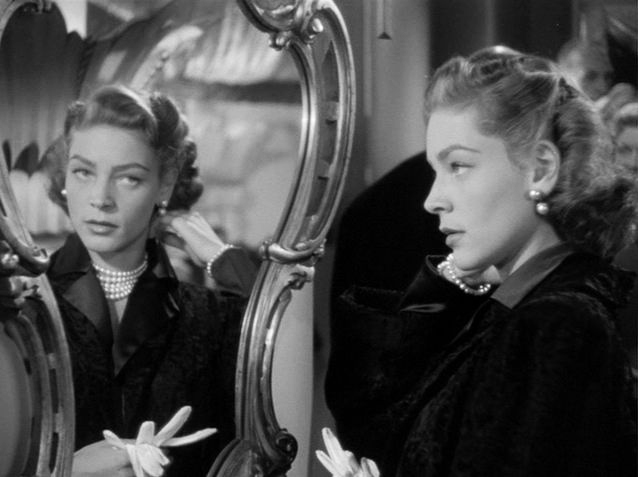
Amy North, Young Man with a Horn – 1950
The Story: Handily the title, Young Man with a Horn, also doubles as the plot of this movie. Kirk Douglas plays Ricky Martin (WHAT), a romanticized version of jazz musician Bix Beiderbecke (oh.) He wanders around playing a horn for a while. It’s… pretty exciting, I’ll tell you that. Lauren Bacall comes in out of nowhere after the most boring 20 minutes in cinematic history, and she is fabulous enough that I forgive everything. She marries “Ricky Martin” because… I don’t know why? She’s drunk, or trying to prove a point, or something? There’s some problems with their relationship, though. The biggest problem is that she breaks up with him to move to Paris with her new girlfriend. NICE! I don’t even know why this guy is surprised, but he is. “Rick” becomes an alcoholic, “driven to it” by Amy (SIGH). Rick is drunk for a while, and then ends up dating Doris Day. That’s not a joke, actual Doris Day was just hanging out off to the side while all this was going on.
This Character is Obviously Queer Because: Announcing to move to Paris with a babely lady artist is not even subtle 50’s code for lesbianism, that’s being like, “Bro, I’m a straight up a lez.” Furthermore, I love how condescending Amy is to every other person in this movie. For instance, she refers to Day’s character with an amused side glance as, “so terribly normal.” Lauren Bacall is over-the-top incredible in this role, and while the crew was clearly trying to make Amy the villain by criminalizing her queer traits and chalking up her interest in women to penis envy… oh, I’m sorry, I mean, “horn” envy… she is a character ahead of her time, and inhabits a place in cinema far above the general quality of this film.
The Downside: My love for Amy North exists in direct opposition for my disdain for pretty much every other character in this movie, and none is worse than our hero, Ricky Martin. If you’ve ever been wondering what the patriarchy looks like, you have but to gaze into the eyes of this Amy-shaming fool. I advise you to fast forward through his parts, because it is mostly him blaming Amy for every single thing that happens. Who needs that, am I right? Definitely not Amy, who bounced like 30 minutes ago. Finally, I imagine it’s not super surprising for anyone to read that this movie about jazz that focuses primarily on white people is problematic in the way it portrays people of color, but, needlessly to say, there are issues. Seriously, only watch the Amy parts.
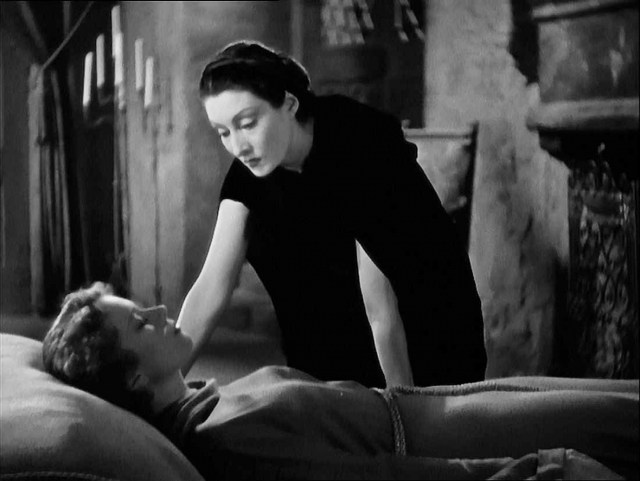
Countess Marya Zaleska, Dracula’s Daughter – 1936
The Story: First off, the Countess is the first vampire in film to seek a cure for her vampirism. Previous vampires of film were pretty okay with being vampires, but not the Countess. She tries not to be a vampire for a good 4 and 1/2 minutes, here. She… doesn’t really try that hard. BUT, STILL. Secondly, Countess Marya Zaleska is also the first lesbian vampire in film, to be followed by HUNDREDS more in the following years. Isn’t that exciting that the first lesbian vampire is also the first neurotic vampire? The origin of lesbian vampires in popular fiction is in the novella Carmilla, penned by Joseph Sheridan Le Fanu in 1871. Here’s the plot: a blonde girl is seduced by a brunette, everyone finds out the brunette is a vampire, some bros show up out of nowhere to murder her with a phallic object. You might remember this plot from every lesbian vampire movie ever made, ever. Since 1871, the whole world has failed to come up with a story other than “seduces blonde, is killed” for lesbian vampires.
This Character is Obviously Queer Because: Hilariously, the censors felt that all hints of lesbianism had actually been removed from this film, which is part of why it’s so delightful to watch the Countess gay it up all across the screen. What I like about Countess Marya Zaleska is her hopefulness, and her desire to break an unhealthy cycle, while all the men in her life are busy telling her that she’s cursed. It might not work out, but she tries. I also appreciate her weird, dry jokes. Overall, this movie is a campy horror film from the black and white era, and worth watching for its place in both horror and LGBT history.
The Downside: Lesbian vampire movies and some other vampire-themed medias tend to echo the belief that homosexuality is an illness by directly drawing comparisons between vampirism and homosexuality. Do these people know that lesbians and vampires are not the same thing? Because it comes off like they catch the persecution theme common to both gays and vampires, but like they maybe miss the part where gay people aren’t undead killers that actually deserve to be persecuted. Scientific studies show that very few gay people feed on blood to survive. Be that as it gay, what I’m getting at here is that being a vampire is a legitimately criminal activity and very scary, and therefore showing one of the first on-screen lesbians in American film as a killer with serious consent issues didn’t do the queer community any favors. The scenes of implied lesbianism are both violent, one with the Countess advancing on a victim as she begs her not to, and second, an interesting scene where she actively DOESN’T kiss a woman, rather hovering over her with their lips nearly touching for several seconds. Well, no means no, Countess, and you’ve got to be stopped, but in a gentler world, maybe you could have just asked those girls out instead of, you know, killing them. And that’s the difference between gay people and vampires.

Theo, The Haunting – 1963
The Story: The film kicks off with your standard 60s horror film narration telling us about all of the horrible things that have gone down at Hill House, mostly that some dude’s wives all died there, died there, died there. Eleanor and a small group of psychically sensitive folks are paid by some whackadoo millionaire to stay in the house even though it’s a totally scary there. Mm-hm. Since we don’t really super care about any of that for the purpose of this article, though, let me describe Theo to you. First, the look. They gave actor Claire Bloom her own individual costume designer to ensure she would come across as the most hip and bohemian of the group. AND SHE DOES. Secondly, she puts the moves on the main character Eleanor, who is suffering a nervous breakdown brought on by the fact that she’s trapped in a ghosty murder house. Theo doesn’t even care, and is basically just like, “You scared, girl? You can come sleep in my bed.” She is that amazing. Also, she is the genius who is like, “You know, we should actually just leave this house, really, if you think about it,” when everyone else is like, “Oh, no, I think we should inexplicably stay, and die here, die here, die here.”
This Character is Obviously Queer Because: Look, they are not trying to hide it. Theo gets really sensual towards Eleanor more than once, and the insinuation is that she lives with her girlfriend, or did until recently. In an extremely bratty moment, Eleanor even calls Theo unnatural. Speaking of genius moments in this film, one that no one brings up is the talkative Theo’s lack of verbal response to Eleanor’s homophobic outburst. It’s a profound moment that perfectly conveys what homophobia feels like using only the anger in one person’s face and the total absence of hostility in the other. Then, ghost stuff happens, so it never gets super resolved, but I’m just saying, it’s out there.
The Downside: This is a solid 60s horror film, well-shot and well-played. It was re-made in 1999, where the introduction of Theo involved immediately announcing her as a flaky artist and bisexual in a relationship with both a woman and a man that “hate each other.” I question that there were no such changes made to the straight characters, and viewers certainly aren’t given an overview of their sexualities within the first 3 minutes of their time onscreen. Also, this change has no relevance to the plot, other than suddenly Theo’s character is written as the most annoying person on earth. The original Theo’s subtle-yet-obvious lesbianism played an important part in the film, while the 1999 re-envisioning of Theo comes across as a flippant, trend-hopping sexual tourist. I find the stereotypes of her character equally offensive to artists, bisexuals, pansexuals, lesbians, feminists, Catherine Zeta-Jones, the original Theo, the writers that created Theo, and to fans of storytelling, in general. I also criticize the remake for being politically and structurally regressive to a movie that was made 33 years prior. Basically, the worst thing about this movie is that the remake was terrible.
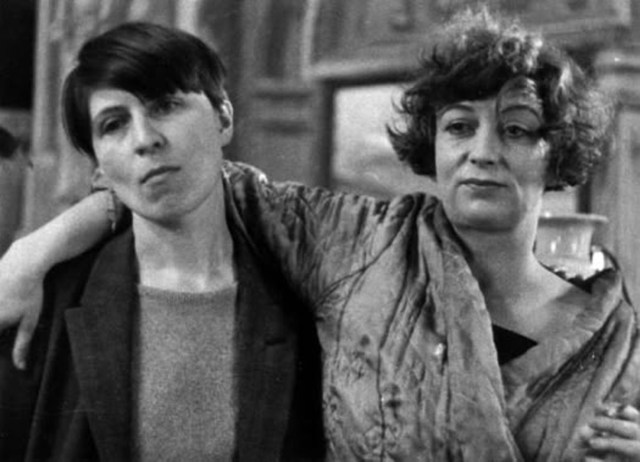
The Manager, Borderline – 1930
The Story: This movie is a real hidden gem. The cast is a hip collection of writers and activists, including Paul Robeson, Hilda Doolittle, and Bryher, and it deals with unfortunately still topical issues of race and relationships. The names of the characters in the film are vague, so the purpose of this article, we’re going to call Bryher the Manager. More or less, there’s a lot of drama going on about an interracial affair, which is a problem for some characters in this movie. It all goes down in more ways than one in a hotel run by the Manager, who is definitely the most delightful character. This is not to discredit the more morose story lines of Paul and Alda Robeson, whose real-life marriage had hit rocky times due to affairs prior to filming Borderline, leading to 2 roles played obviously close to home. Paul Robeson was also a theater star of this time, known for his acting as much for his stance against oppression, and who was blacklisted throughout the McCarthy era.
This Character is Obviously Queer Because: The Manager is a butch woman who is goodnatured and possibly even heroic in the context of the story. This character is unfortunately a rarity in film, where butch women are often invisible. There is no clear romantic interest for her, but it’s implied that she’s in an open relationship with the bartender, played by a charmingly rowdy Charlotte Arthur. This would be true to life for Bryher herself, who was in an open relationship with H.D. until her death in 1961.
The Downside: This is honestly a really dark film, so don’t go watching it thinking it’s going to be smooth sailing just because it’s 1930. It’s more about race issues than it is about any of the individual characters, which is part of what makes it incredible, but of course, it could be difficult to emotionally process for someone seeking light entertainment. For me, all of that just makes a good thing even better, but don’t say I didn’t warn you.
Manuela, Madchen in Uniform – 1931
The Story: 14 year old Manuela’s mother dies, and she is placed in a boarding school that is run by a severe headmistress with a seriously weird interest in being overly strict to teen girls. Manuela crushes out hard on her teacher, Miss Von Bernberg, who is sympathetic, flattered, and mostly troubled by Manuela’s interest in her. The untold back story in Miss Von Bernberg’s eyes could be a whole other movie, but she obviously recognizes the inappropriate nature of this schoolgirl crush, and attempts to combat it while still remaining the nicest person ever.
This Character is Obviously Queer Because: So, she plays Romeo in her school’s theater reproduction of “Romeo and Juliet,” and serenades her teacher in front of the entire school in a misguided attempt to win her love. Not a lot of subtlety going on there.
The Downside: The downside of this film, I would say, is the legacy of the “lesbian teacher sleeps with student” trope. Madchen in Uniform is adorable only because this teenager is so genuine in a crush that can never be realized, and which kind of sketches the teacher out. It’s about the way the world seeks to punish the misguided passion of youth much more than any relationship between the characters. In following years, films like Loving Annabelle, Bloomington, and Cracks have been made that detail teacher/student relationships that are at best emotionally abusive and at worst actually criminal. More or less, some filmmakers later ended up taking this story in the most wrong direction they could have. Madchen in Uniform, thankfully, is not about that.
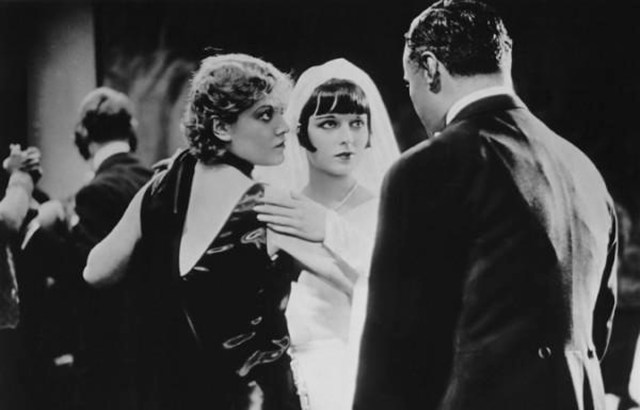
Countess Augusta Geschwitz, Pandora’s Box – 1929
The Story: Pandora’s Box is a classic for reasons that go well beyond this list, mostly because Louise Brooks was such a fascinating person, and so remains the perfect casting choice that made this somewhat absurd story not only believable but downright haunting. While the plot gets soap opera level convoluted as it goes along, it ultimately comes across as perfectly in compliance with the intensity of these characters. The general vibe is that Lulu is a young woman whose identity seems formed entirely around her own sexual power, which is used so haphazardly that it causes a domino effect, destroying the lives of the people close to her. The film has been re-cut a multitude of times, so the direction this all goes in is strongly related to who edited the film, so I couldn’t spoil this film if I tried, but the always impeccable Criterion Collection recently released a remastered edition that I highly recommend.
This Character is Obviously Queer Because: Several key moments in the plot are facilitated by Lulu’s interest in and manipulation of both men and women. For the purpose of this article in specific, the most important of these suitors would be Countess Augusta Geschwitz, who dances with Lulu lovingly, and then glares daggers at the man that cuts in a few moments later.
The Downside: The implications of a storyline in which a woman uses sex to get ahead and then is punished by a series of misfortunes is often quite legitimately a red flag for many feminists, and I agree that it should be. On the other hand, the character of Lulu is genuinely fascinating, and has caused audiences to marvel at her for now very close to 100 years, so it would be a mistake to think there’s nothing there.




